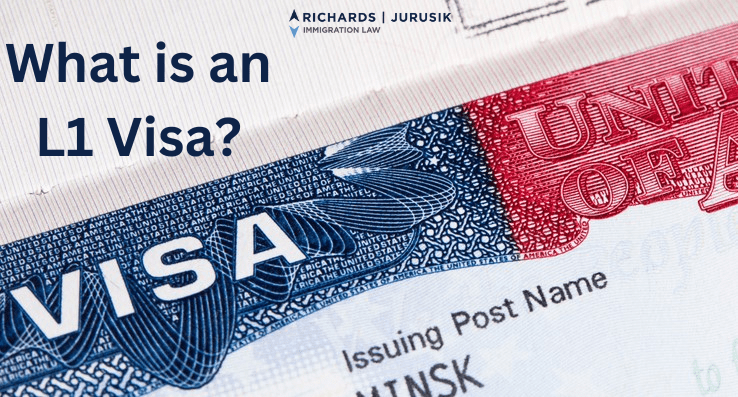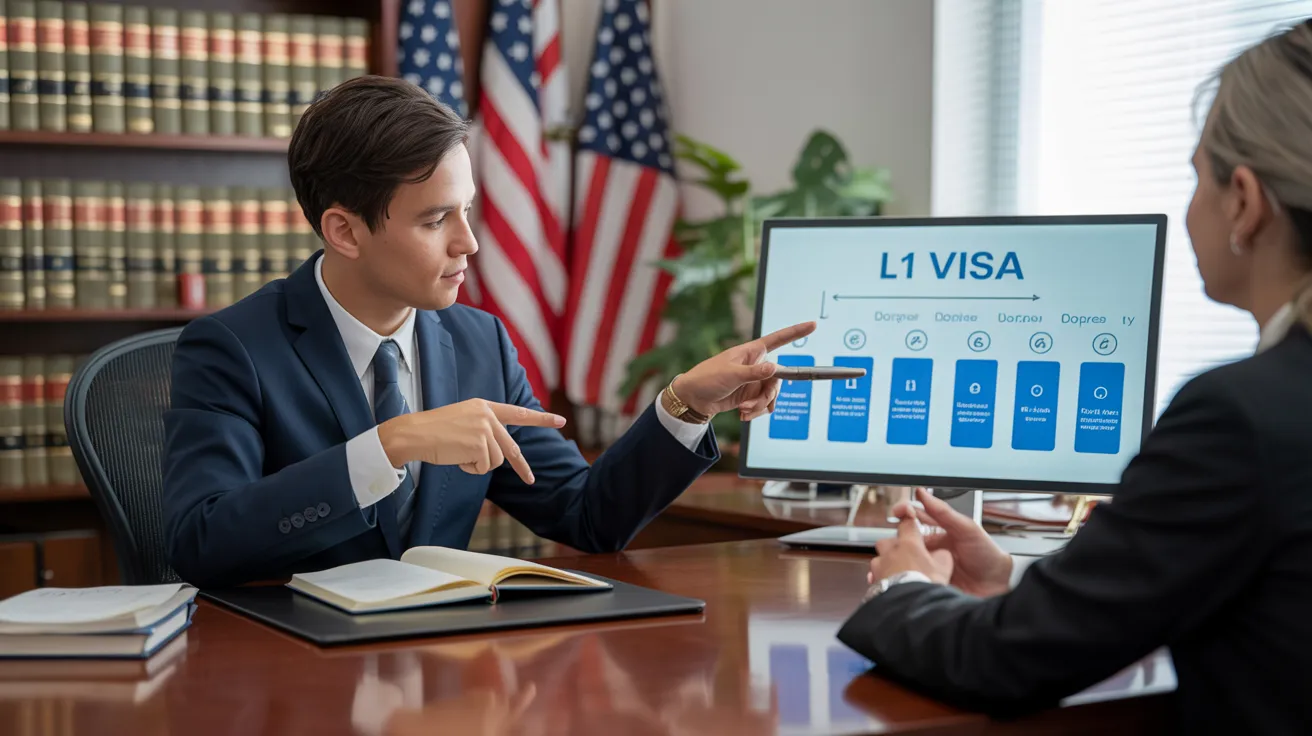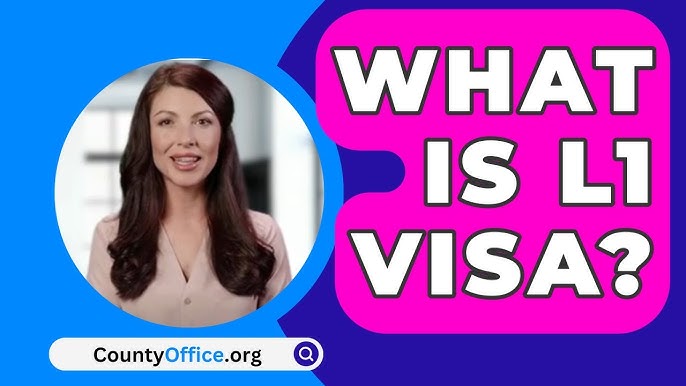Opening Opportunities: A Comprehensive Overview to the L1 Visa Process
The L1 visa procedure offers a crucial pathway for multinational firms looking for to transfer crucial staff members throughout boundaries. Understanding the nuances of eligibility criteria, the differences between L-1A and L-1B visas, and the intricacies of the application procedure can greatly impact an applicant's success. Navigating this complex landscape is not without its challenges, and cautious interest to documentation and employer sponsorship is important. As we explore the vital elements of this procedure, the strategies for conquering prospective barriers will come to be obvious, disclosing exactly how educated preparation can open a globe of chances.
Understanding the L1 Visa
Recognizing the L1 visa entails acknowledging its significance as a crucial tool for multinational companies seeking to transfer experienced employees in between global offices. This non-immigrant visa group helps with the activity of executives, supervisors, and specialized expertise employees to the United States, therefore allowing companies to maintain operational connection and harness global ability effectively. The L1 visa is divided right into two primary classifications: L-1A for supervisors and execs, and L-1B for employees possessing specialized knowledge.The L1 visa serves a vital duty in boosting a business's affordable side in the worldwide market - L1 Visa Requirements. By allowing companies to move their vital workers, businesses can assure that important projects are handled by qualified individuals who are currently acquainted with the company's society and functional procedures. This inner transfer system not just cultivates knowledge sharing however also promotes technology and collaboration across borders.Moreover, the L1 visa is frequently preferred for its reasonably straightforward application procedure compared to various other visa groups, as it permits dual intent, permitting owners to seek irreversible residency while on a momentary job visa. This attribute makes the L1 visa specifically appealing for both employers and workers, as it streamlines the pathway for experienced specialists to develop lasting residency in the USA
Eligibility Standards
Qualification for the L1 visa pivots on several vital standards that ensure both the worker and the company meet details credentials. This non-immigrant visa is made for multinational firms to move workers from foreign offices to united state counterparts.Firstly, the company needs to be a certifying organization, which consists of a moms and dad company, branch, affiliate, or subsidiary of an U.S. organization. The business must have been doing business for at least one year both in the U.S. and abroad. This ensures that the business has adequate operational stability and a legit presence.Secondly, the staff member needs to hold a supervisory, executive, or specialized expertise position. For L1A visas, the candidate needs to demonstrate supervisory or executive credentials, while L1B visas focus on specialized understanding relevant to the organization's products, services, or procedures. Additionally, the worker should have worked for the foreign entity for at the very least one constant year within the last three years before their application.Lastly, the worker's role in the U.S. have to align with their previous position, making certain that their skills and expertise are leveraged for the firm's advantage.
Kinds of L1 Visas
The L1 visa classification comprises two primary kinds designed to help with the transfer of staff members within multinational firms: the L1A visa for supervisors and executives, and the L1B visa for employees with specialized expertise. Each kind offers distinct purposes and has certain eligibility criteria.The L1A visa is customized for individuals that hold supervisory or executive positions within a firm. This visa allows high-level workers to transfer to a united state branch, subsidiary, or associate of the very same company. Candidates for the L1A visa have to show that they have actually been employed in a supervisory or executive capacity for at the very least one constant year within the previous 3 years before their application. Furthermore, this visa offers a longer period of remain, originally granted for 3 years, with the opportunity of expansions for as much as 7 years.In comparison, the L1B visa is planned for professionals with specialized understanding relevant to the business's items, services, or processes. To certify, applicants should verify that their know-how is vital to the company which they have actually benefited at least one continuous year within the last 3 years in a function that needed this specialized knowledge. The L1B visa is originally approved for 3 years, with extensions readily available for up to 5 years.Both visa kinds are important for business looking for to boost their global operations by leveraging proficient personnel, consequently advertising advancement and effectiveness within the united state market.
Application Process
Guiding with the L1 copyright process entails a number of essential actions that have to be diligently followed to ensure a successful end result. The procedure begins with the U.S. employer, who must initially develop qualification by showing a qualifying connection with the international entity and validating that the staff member meets the certain requirements for the L1 visa group being sought.Once eligibility is validated, the company starts the procedure by submitting Type I-129, the Petition for a Nonimmigrant Employee, with the U.S. Citizenship and Migration Solutions (USCIS) This kind should be accompanied by a detailed description of the job tasks to be done, the organizational structure of both the united state and international entities, and the employee's certifications. It's essential to verify that all info is accurate and complete, as omissions or mistakes can lead to hold-ups or denials.Upon authorization of the I-129 request, the next action entails the staff member obtaining the L1 visa at an U.S. consular office or consular office in their home nation. This phase calls for the conclusion of Type DS-160, the Online Nonimmigrant copyright, and scheduling a meeting. During the interview, the candidate must offer proof sustaining their certifications and the employer's petition.After the visa is approved, the worker can enter the United States to operate in the assigned role. In general, careful prep work and adherence per step of the application process are important for an effective L1 visa end result.
Called for Paperwork

Crucial Forms Required
Steering the L1 Visa process requires careful focus to the vital types and documentation needed for an effective application. The key type required is the Form I-129, Request for a Nonimmigrant Employee, which should be finished and submitted by the U.S. employer. This form outlines the information of the work deal and the certifications of the employee seeking the L1 Visa.Alongside Kind I-129, the candidate will require to total Form I-539 if coming with member of the family are likewise obtaining visas. Additionally, the employer must supply proof of the qualifying connection between the united state entity and the international entity, frequently demanding the entry of business records such as short articles of unification or financial statements.Moreover, it is vital to consist of the L Category Supplement to Kind I-129, which specifies the sort of L Visa being asked for-- either L-1A for supervisors and executives or L-1B for employees with specialized expertise. Applicants should ensure that all forms are authorized and dated properly, as insufficient entries can lead to delays or denials. Appropriately constructing these vital types lays the structure for a smoother L1 copyright process.

Sustaining Evidence Requirements
Sustaining documents is essential for a successful L1 copyright, as it substantiates the insurance claims made in the petition. Candidates must offer a series of records to show qualification for the visa, which is categorized right into two main kinds: proof of the certifying relationship between the U.S. and international entities and evidence of the candidate's qualifications.To develop the partnership, applicants must send paperwork such as company business charts, monetary statements, and evidence of ownership. These documents confirm that the international firm has a qualifying partnership with the U.S. employer, whether as a moms and dad business, subsidiary, branch, or affiliate.For the applicant's credentials, necessary records include a comprehensive work letter from the international employer, describing the applicant's job title, obligations, and duration of work. Furthermore, academic credentials, such as levels and diplomas, should be provided to confirm the candidate's experience in the pertinent field.
Employer Sponsorship Papers

Common Obstacles
Maneuvering the L1 visa process offers several common difficulties that applicants should recognize. Key issues usually include strict documents demands, potential hold-ups in processing times, and the requirement for stringent legal conformity. Understanding these challenges can aid applicants much better prepare and reduce dangers during their copyright journey.
Paperwork Needs
The L1 copyright process frequently offers substantial obstacles associated with documentation requirements. Candidates should supply comprehensive documentation to establish qualification, which can lead to confusion and possible delays. Trick papers consist of evidence of a certifying relationship in between the united state and international company, proof of the applicant's work background, and in-depth details concerning the work duty in the U.S.One common challenge is collecting adequate proof to demonstrate the nature of the qualifying connection. Companies typically battle to present clear organizational charts or financial statements that show the link in between the entities. Furthermore, making certain that letters of assistance from companies accurately mirror the applicant's job duties and certifications is crucial, as vague descriptions can result in denials.Another concern arises from the demand for detailed job summaries that align with the L1 visa categories. Candidates should verbalize not just their existing duty but additionally their supervisory or specialized knowledge duties plainly. This necessitates a thorough understanding of both the applicant's position and the regulatory language utilized in L1 applications.
Processing Dead Time
Experiencing delays in handling times is a typical challenge dealt with by L1 visa applicants, usually leading to disappointment and unpredictability. A number of aspects contribute to these delays, consisting of high application volumes, raised analysis of applications, and management backlogs within the united state Citizenship and Immigration Provider (USCIS) Candidates may discover that handling times can differ significantly depending upon the solution center managing their application, as each facility has its very own workload and performance degrees. Furthermore, the intricacy of the applicant's instance, such as the demand for extensive documents or information, can further extend wait times.In some instances, problems connected to the applicant's existing migration standing or previous visa history might also cause added hold-ups, as USCIS may need further testimonial or details. It is important for prospects to stay proactive during this duration, maintaining open interaction with their employers and legal reps to deal with any type of potential worries promptly.Understanding these handling time challenges can help L1 visa candidates plan for feasible hold-ups and mitigate the effect on their shift and career strategies. Perseverance and persistance are necessary merits in steering this intricate process.
Lawful Conformity Issues
Several L1 visa applicants encounter legal conformity concerns that can complicate their trip towards obtaining the visa. Comprehending and adhering to the specific guidelines established by the united state Citizenship and Migration Services (USCIS) is important. Common challenges consist of showing the certifying relationship in between the foreign and united state companies, along with proving that the candidate possesses the requisite specific understanding or supervisory capacity.Additionally, candidates must offer comprehensive paperwork detailing their work tasks, company framework, and economic practicality of the U.S. entity. Poor or inaccurate documentation can lead to hold-ups and even rejections. Companies have to also guarantee that they adhere to labor regulations, including wage and working condition requirements, which can impact visa eligibility.Another common problem involves preserving conformity with the regards to the visa when given. Adjustments in employment standing, work responsibilities, or firm framework can necessitate amendments to the visa, which if not dealt with without delay can lead to lawful issues. As an outcome, staying informed about conformity needs and seeking lawful advise when essential is necessary to navigate the intricacies of the L1 visa procedure successfully.
Tips for Success
Success in the L1 copyright procedure typically rests on precise preparation and interest to information. To enhance your opportunities of approval, begin by extensively recognizing the eligibility needs for both the L1A and L1B visa categories. Review whether your placement at the business certifies as supervisory, executive, or specialized expertise, as this categorization notably affects your application.Next, collect extensive paperwork that corroborates your insurance claims. This consists of business graphes, in-depth job summaries, and proof of the firm's functional structure. Clear and succinct proof of the certifying relationship between the U.S. entity and the international entity is crucial. Confirm that all files are arranged practically and provided in a specialist way, as this reflects your dedication and seriousness about the L1 Visa application.Engage the services of a skilled migration attorney that concentrates on L1 visas. Their knowledge can show invaluable, guiding you through complex guidelines and guaranteeing that all paperwork conforms with present laws. Furthermore, get ready for the meeting by practicing responses to common inquiries and preparing to review your duty and payments to the business in deepness.
Regularly Asked Inquiries
Can Family Members Members Come With the L1 Visa Owner?
Yes, household participants of L1 visa holders, including spouses and unmarried children under 21, can go along with the key visa holder. They may additionally make an application for L2 visas, which allow them to stay in the USA.
Exactly How Long Can I Stay on an L1 Visa?
The L1 visa allows initial stays of up to three years, with the possibility of extension. L1A visa owners may stay for an optimum of seven years, while L1B visa holders can remain for 5 years.
Can L1 Visa Owners Obtain a copyright?
Yes, L1 visa owners can request a permit. L1 Visa Requirements. They may pursue permanent residency via employment-based groups, typically calling for sponsorship from their company, supplied they satisfy the required certifications and documentation requirements
What Happens if My L1 copyright Is Denied?
If your L1 copyright is refuted, you may obtain a notice describing the reasons for rejection. You can seek to appeal the decision, reapply, or discover alternate visa options based upon your scenarios.
Exist Any Traveling Constraints With an L1 Visa?
An L1 visa normally permits worldwide travel; nonetheless, re-entry to the U. L1 Visa.S. is contingent upon keeping legitimate status. Tourists need to assure compliance with visa problems to prevent issues upon return
Conclusion
